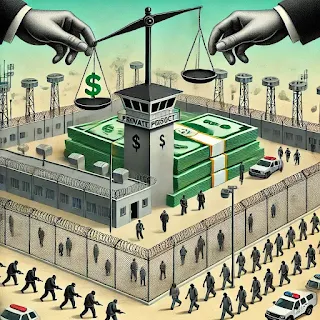Private prisons, such as those operated by companies like Management & Training Corporation (MTC), make profits through a combination of government contracts and guaranteed occupancy quotas. Here's a clear breakdown for you:
Government Contracts: Private prisons are contracted by governments (state or federal) to manage and operate correctional facilities. In return, these private firms are paid a daily rate for each inmate they house, which covers costs like staffing, food, and security, but also allows for profit margins. These contracts are often multi-year agreements, providing long-term revenue for the prison operators.
Occupancy Quotas: Many private prison contracts include a bed guarantee or occupancy clause, which means the government agrees to pay for a certain percentage of beds to be filled, regardless of the actual inmate population. For example, if a contract stipulates a 90% occupancy rate, the state must pay for 90% of the prison’s capacity even if the prison is only half full(Truth or Fiction?)(Equal Justice Initiative). This guarantees steady income for the private company, insulating them from the risks of fluctuating inmate numbers.
Reducing Operating Costs: To maximize profits, private prisons often seek to reduce operating costs, such as cutting spending on staffing, food, healthcare, and rehabilitation programs. However, this can lead to ethical concerns regarding the welfare of inmates and the quality of the prison environment.
Expanding Incarceration: Some argue that private prison companies lobby for tougher sentencing laws and policies that increase incarceration rates to maintain a steady or growing prison population. This ensures that they continue to profit from the need for more prison beds(Equal Justice Initiative).
Private prisons essentially turn incarceration into a business, where the primary revenue stream comes from filling beds with inmates. This creates a financial incentive for higher incarceration rates, which critics argue contributes to mass incarceration and undermines criminal justice reform.


No comments:
Post a Comment
Note: Only a member of this blog may post a comment.